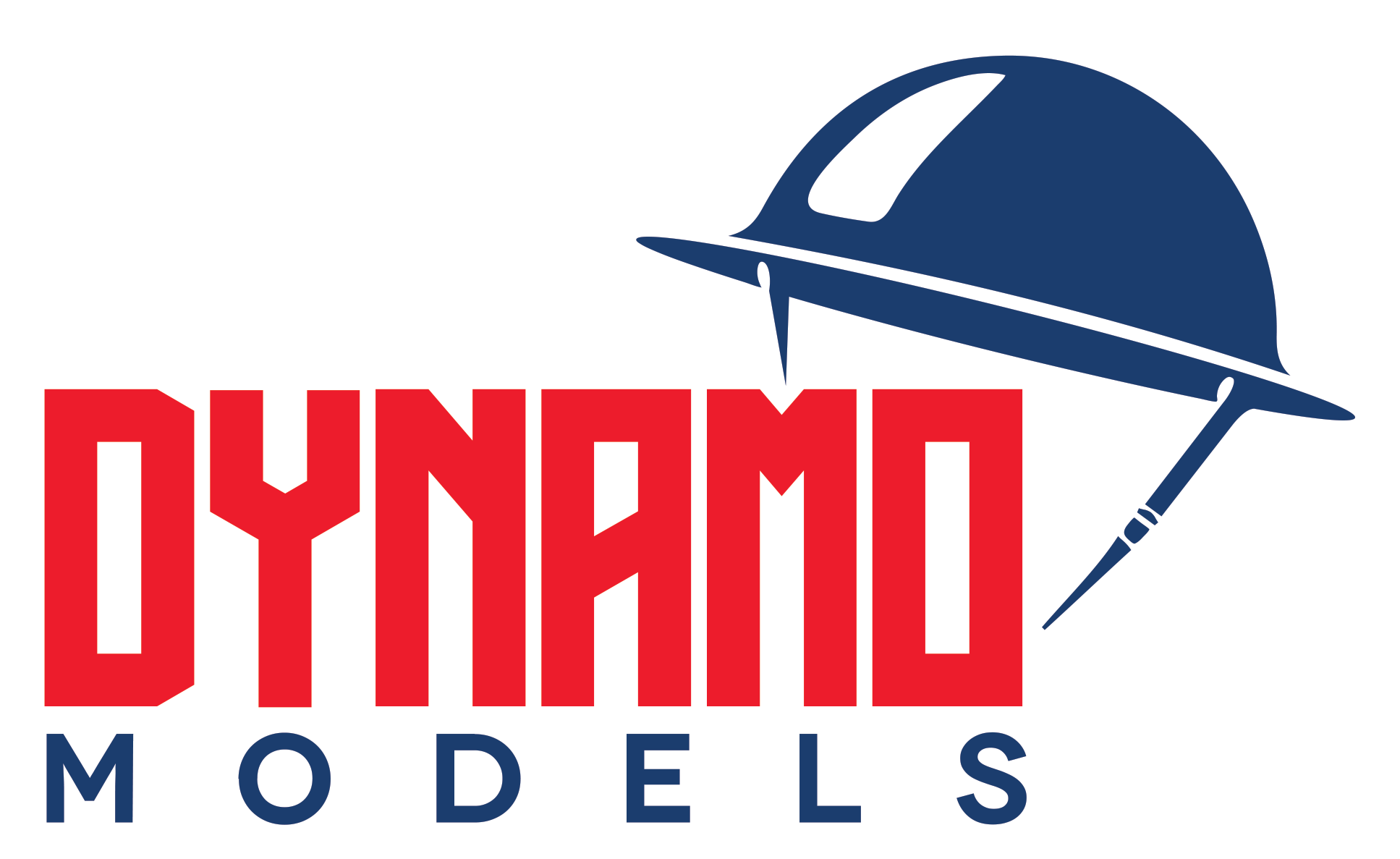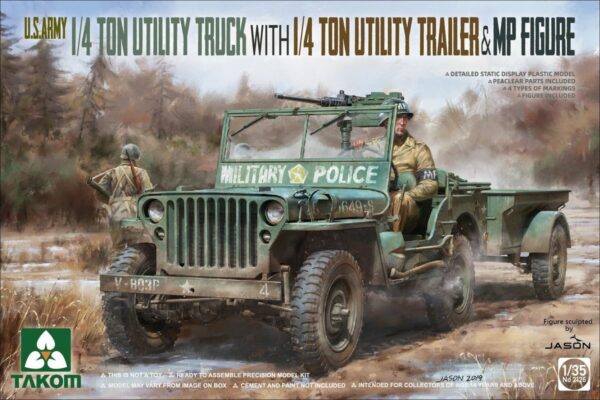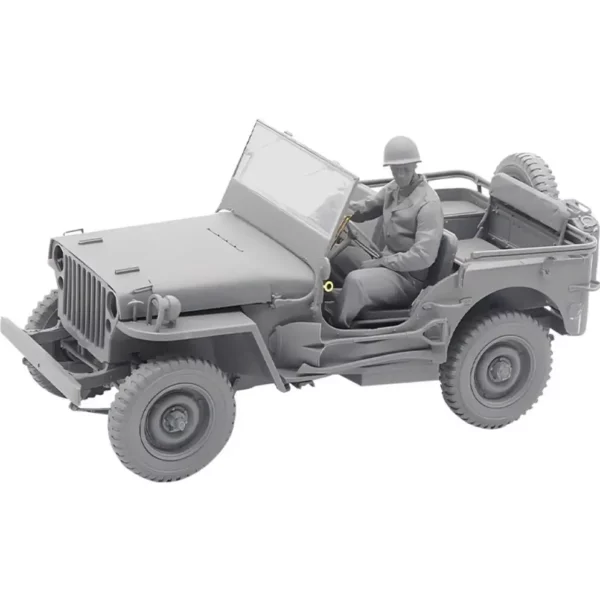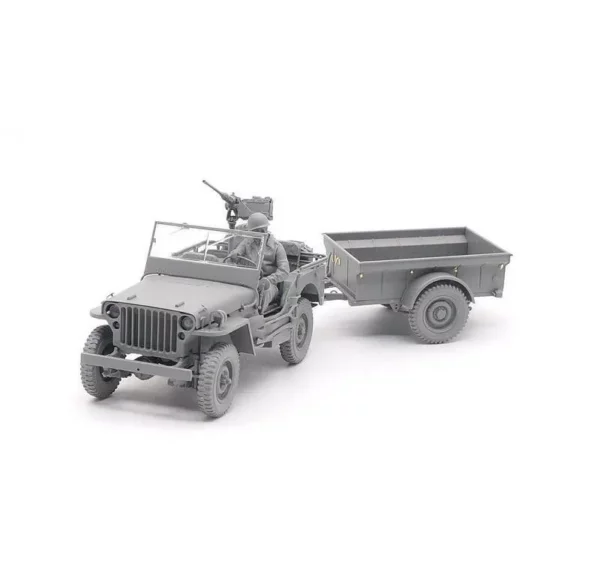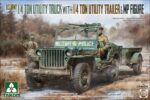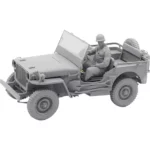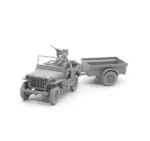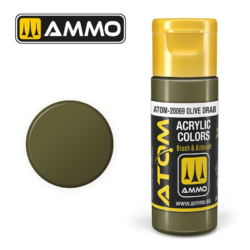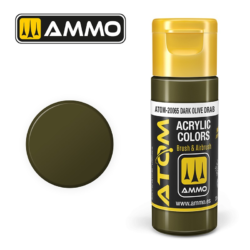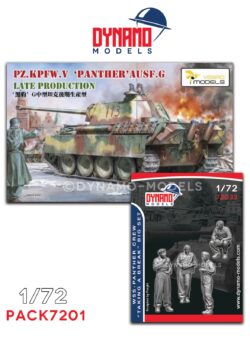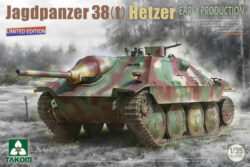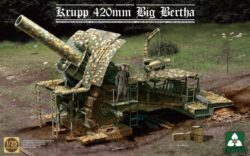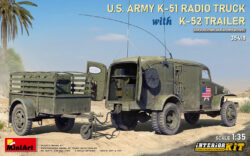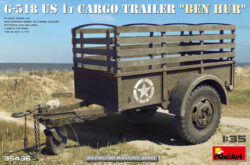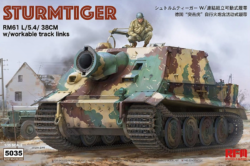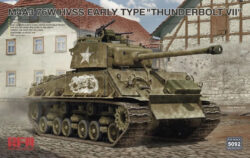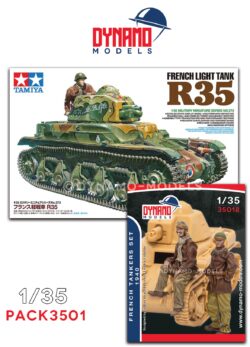Takom 2126 – U.S. Army 1/4 Ton Utility Truck with 1/4 Ton Utility Trailer & MP Figure
27,50€
– Plastic model kit to build a U.S Army Jeep and the trailer Takom
– Scale plastic kit include photo-etch, clear parts and decals
– Markings for 4 Versions
– incl. 1/4 ton trailer
– incl. driver figure
– Model to be assembled and painted. Glue and paint not supplied.
2 en stock
The Takom 2126 model kit is a 1/35 scale replica of a U.S. Army 1/4-ton utility truck, commonly known as the “Willys Jeep,” complete with a trailer and an MP (Military Police) figure. This kit offers a highly detailed and historically accurate representation of the vehicle, widely used by the Allied forces during World War II.
- Complete Set: Includes a detailed model of the utility truck, a trailer, and an MP figure for added realism.
- Highly Detailed Parts: Finely molded plastic parts capture the rugged design of the original vehicle, including engine and interior details.
- Photoetched Parts: The kit includes photoetched components for enhanced detail, particularly for smaller or more intricate parts like grilles.
- Decal Sheet: Comes with a decal sheet to represent various markings used by the U.S. military during WWII.
- Clear Parts: Includes clear parts for realistic windows and headlights.The U.S. Army 1/4 Ton Utility Truck, commonly known as the Jeep or Jeep Willys, was a versatile light vehicle used during World War II. Introduced in 1941, it was designed for reconnaissance, personnel transport, and general utility tasks. Powered by a 60 hp 4-cylinder engine, it could reach speeds of up to 65 km/h and had a range of 300 km. The Jeep was lightweight, highly maneuverable, and could handle rough terrain, making it an iconic and indispensable asset for Allied forces throughout the war.This model is ideal for enthusiasts of WWII military vehicles, offering a rewarding building experience with its precise and intricate parts
Jeep Willys MB
The Jeep Willys MB, widely known simply as the “Jeep,” is one of the most iconic and versatile vehicles of World War II. Developed by Willys-Overland in 1941 to meet the U.S. Army’s request for a light, all-terrain vehicle, it became essential to the Allied forces’ mobility on a wide range of terrains and conditions. Its rugged design, adaptability, and reliability earned it a legendary status that extended well beyond the war.
Design and Development
In 1940, the U.S. Army required a vehicle that could serve multiple roles: reconnaissance, personnel transport, and light weapons carrier, all while being lightweight, agile, and durable. This led to a competitive bid among manufacturers. Willys-Overland ultimately won the contract with their prototype, the Willys MB, beating competitors largely due to its powerful “Go Devil” engine, which provided it with outstanding performance capabilities. The final design featured an efficient, simplistic build that prioritized functionality over luxury. In total, nearly 640,000 Jeeps were produced during the war, with both Willys and Ford producing vehicles under license to meet demand.
The Jeep was constructed with a sturdy frame and a 4-cylinder, 2.2-liter “Go Devil” engine that produced 60 horsepower and 105 lb-ft of torque. While this may seem modest by modern standards, it provided ample power to move the vehicle over rough terrains with relative ease. Its compact size and lightweight construction—approximately 1,040 kg (2,300 lbs)—allowed it to be deployed by air and maneuver through forests, deserts, and mountainous regions. The Jeep also had a high ground clearance, a four-wheel-drive system, and a simple, manual 3-speed gearbox, all of which contributed to its renowned off-road capability.
Performance and Versatility
The Willys MB Jeep was renowned for its versatility. It could reach a top speed of about 65 km/h (40 mph) and had a range of approximately 300 kilometers (186 miles) on a full tank, making it suitable for extended reconnaissance missions. The Jeep’s open design allowed for quick ingress and egress, while its folding windshield and removable canvas top provided adaptability in diverse weather conditions. The four-wheel-drive system, a pioneering feature at the time, made it highly capable on varied terrains, from muddy trails to sandy beaches.
Because of its versatile design, the Jeep could be adapted for various roles. It was often equipped with a .30 caliber machine gun or, less commonly, a .50 caliber machine gun for fire support. The vehicle was also modified for ambulance use, capable of carrying two stretcher-bound soldiers or extra medical equipment. Additionally, it served as a communications platform, with models modified to carry radios for coordinating movements or calling in air support.
Operational Use and Tactical Role
The Willys Jeep played a crucial role in the Allied war effort. It was used by infantry units, artillery battalions, and logistics teams, who relied on it for quick, reliable transport. Its off-road performance allowed it to reach remote locations, assist in rapid troop movement, and provide logistical support where larger vehicles could not operate. The Jeep’s adaptability meant it was used for reconnaissance, supply runs, medical evacuation, and as a command vehicle. It could be transported by ship, glider, or even dropped by parachute, making it a flexible asset in both European and Pacific theaters.
On the battlefield, Jeeps were valuable in reconnaissance roles, moving forward to scout enemy positions or terrain. Its small size and low profile allowed it to operate stealthily and navigate through narrow or concealed pathways, making it difficult for enemy forces to spot and engage.
Legacy and Post-War Influence
After the war, the Jeep Willys MB’s legacy continued. It became the precursor to modern four-wheel-drive vehicles and sparked the creation of the civilian Jeep CJ (Civilian Jeep) series, which retained many of the features that made the Willys MB successful. The Jeep influenced military vehicle design globally and became synonymous with rugged, reliable off-road performance.
The Willys MB not only served as a vital wartime tool but also became a cultural icon, embodying the values of resilience and adaptability. Its design has inspired generations of off-road vehicles and remains an enduring symbol of innovation and functionality. Today, original WWII Jeeps are highly prized by collectors and military enthusiasts, commemorating the Jeep’s vital role in securing victory during World War II.
